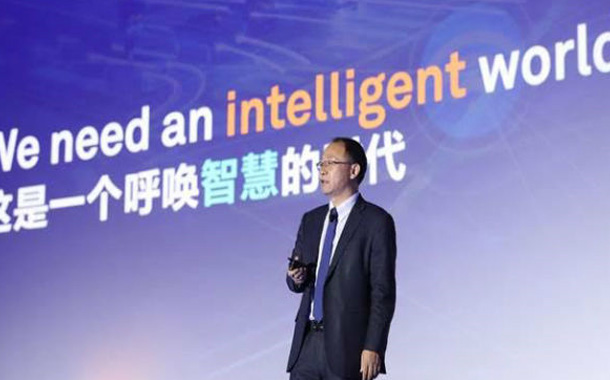At Ultra-Broadband Forum 2017, David Wang, President of Products & Solutions, Huawei, launched the All-Intelligent Network. By building intelligent, simple, and superfast ultra-broadband networks, Huawei aims to help carriers address future challenges brought by business uncertainties, and achieve new growth in the B2B, B2C, and B2H segments.
The forthcoming intelligent world will present new opportunities for the development of ultra-broadband. The number of video users has increased significantly, and millions of companies are migrating to the cloud. Leading countries have released timetables for 5G commercial deployment. However, many carrier networks still lack agile operation systems. They are hard to maintain, and rely on only a small number of security features for protection, which makes it difficult to support the future development of business where uncertainties are rife.
“In the physical world, intelligent transportation can address uncertainties in the transport network, such as traffic jams and other inefficiencies. Likewise, the uncertainties of the digital world also need to be addressed through intelligence. Intelligence arises from simplicity, and simplicity accelerates the integration of intelligence into networks,” said David Wang.
To this end, Huawei has launched the All-Intelligent Network, to help carriers address future business uncertainties. The All-Intelligent Network has three key features: intelligent, simple, and superfast.
Intelligence is the intelligent business operations and network O&M. There are three steps to build intelligent networks: from automatic to adaptive, and ultimately to autonomous. In this context, ‘automatic’ means the ability to automatically provision services and automate network deployment and maintenance. By integrating network managers and controllers, the All-Intelligent Network connects new SDN networks and traditional networks. This will enable one-click services and end-to-end automatic service provisioning.
‘Adaptive’ is built on intelligent analyzers on top of automation, to collect real-time network data and perceive network status. The All-Intelligent Network is able to automatically generate and optimize policies based on service and network SLAs, enabling networks to evolve from open-loop configuration to closed-loop optimization. ‘Autonomous’ is the enhancement of analyzers by introducing AI and machine learning algorithms to enable network self-learning. Networks will evolve, from following programmed, static policies to learning dynamic policies on their own, thus achieving network autonomy.
The second feature is simplicity. The All-Intelligent Network optimizes traditionally siloed architecture by leveraging IT concepts and technologies. It decouples networks into two layers – an elastic and reliable transport layer, and a flexible and agile service layer. The architecture gets simplified, where network resources are adjusted fast and flexibly. By using a unified protocol, networking, which used to run on multiple IP protocols, becomes more standardized, and a standard service configuration model will be created to reduce the difficulty of O&M and configuration. The number of layers from OTN to CO is also reduced to enable one-hop access to any application, helping carriers reduce network latency, improve service experience, and flatten network topology.
The third feature is superfast. The definition of ultra-broadband is renewed to encompass ultra-low latency, ultra-high bandwidth, and massive connections. Latency is reduced from 30 ms to 5 ms, allowing new services such as IoT, data center interconnect, enterprise cloud applications, and cloud VR. With ultra-high bandwidth, it is not just about higher bandwidth, but also a smaller footprint and lower power consumption. Future UBB networks also need to enable the connection of the predicted massive number of things that are envisioned.
“The All-Intelligent Network is the focus of our investment and innovation when it comes to future networks. We are confident that the All-Intelligent Network will help carriers better seize the strategic opportunities in video, enterprise cloud adoption, and 5G, and unleash the power of ultra-broadband to enable ultimate business success”, Wang concluded.


